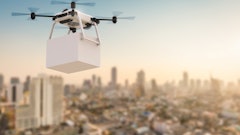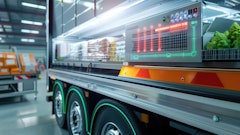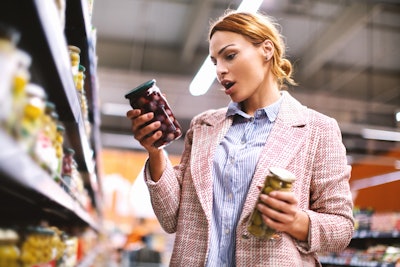
Getty Images
Online grocery shopping is growing at a rapid rate, and grocers are starting to take notice. Traditional brick-and-mortar grocers are responding to increasing demands by growing their e-commerce, but with that comes the need for more warehousing space.
Food Logistics spoke with Scott Fletcher, President and CEO at LocatorX and Pat Pickren, VP Product at LocatorX to determine why online grocery is on the rise and what technology is needed to fulfill orders.
- Why is online grocery shopping growing at such a rapid rate?
- Online grocery shopping in the US will more than double from 2017 to 2021 (up to almost $30 billion). But even with that growth, the majority of shoppers have not used an online grocery service. The reason growth is happening so fast is that consumers - and many of them younger consumers - are becoming more comfortable with the convenience of online shopping. As more trusted retailers, such as Walmart, Whole Foods and, begin to offer home delivery services, people are becoming more trusting of home delivery. Additionally, some users utilize a mix-and-match approach, ordering the bulk of their dry and packaged goods online to be prepared in-store. Then, when they arrive to pick up, they grab additional items they may want. This allows consumers to minimize their footwork while in-store, but still have control over things like ripeness of produce or selecting a certain cut of meat.
- Why is relying on a third-party delivery service, such as Instacart, becoming such a popular option for grocers?
- This is becoming popular due to “the Amazon effect.” Amazon's purchase of Whole Foods shook grocers. Many thought that Amazon would not enter the grocery retailing space prior to their acquisition of Whole Foods. And while it may be too early to state that Amazon has disrupted the grocery retailing space, its actions woke up many grocery leaders. Prior to this, Instacart was well-known, had Whole Foods as its largest customer, and was ready to find more customers after the Amazon acquisition. There are many others though that provide this service. For grocery retailers, it can be attractive to have a service which is not a competitor and can focus on a core competency that the grocer may not have in-house.
- What challenges may grocers face when they rely on an all-inclusive provider?
- The biggest challenges grocers will face from an all-inclusive provider will be customer experience and competitive threat. If a grocer relies on an all-inclusive service for digital marketing, in-store selection, and delivery and billing to a customer then what real value is the grocer adding? The all-inclusive provider can end up being an unintended trojan horse. So there is no one-size fits all model and it is in the best interest of a grocer to think about the full customer experience and what their customers truly value most (i.e, online ordering with in-store pickup or using grocer associates to do selection for customers, etc.).
- How can retailers develop an online grocery delivery tool that they can control?
- This is really about digital transformation. Most grocers are not digital marketers but developing an online grocery delivery tool will require gaining expertise in designing a digital experience for their customers. This requires design thinking to understand the full customer lifecycle and being selective about what the grocer will own versus what will be the responsibility of the partner. Choose your partners wisely and fully understand their capabilities and strengths.
- In what ways can nanotechnology grow grocers’ e-commerce and eliminate dependence on other tools?
- Digital transformation in many ways is about bringing together the physical and digital spaces. For example, having smart tags or labels allows consumers to interact and find out critical product information, such as when this produce was harvested or certifying that it is organic. This information is beneficial to consumers who want to make better-informed purchases. These smart tags or labels are powered by micro-electronics that contain the digital birth certificate of the product. Consumers don't have to utilize additional tools such as third-party websites; they can interact with their smartphone and scan the label to find out the necessary information. It also provides a valuable way for the retailer to engage with the consumer in-store or after purchase by having unique certified labels for targeted interactions, such as customer surveys or coupon sharing.
- How can nanotechnology speed up delivery time?
- A digital representation of the physical product can assist in making just-in-time decisions such as re-routing of product that is on a truck. If you know that one store already has more than enough lettuce, then the truck that has lettuce can be re-routed easily, even in transit, to the store that has lower inventory. This ability to re-route is enabled by the insight into your supply chain from warehouse to truck to pallet to case to item. Smart labels that can provide two-way communication using nanotechnology enable this type of intelligent product supply chain. LocatorX’s solution will offer real-time inventory by providing a digital representation of what’s happening physically to the product, this gives the opportunity to have real-time inventory changes.
- In what ways can tracking tools assist with order fulfillment and last-mile delivery?
- Just as in re-routing to speed delivery, knowing where the product is all the way down to the last mile is the holy grail of logistics. Advances in technology such as LocatorX’s Solid-State Miniature Atomic Clock are right around the corner. This technological advancement can be placed directly on a label/tag and has the revolutionary power find and track important items. This will provide more accurate location data that can be available at a low cost and work with almost any type of product. This solution is what will power the future. Just imagine a food item that can communicate with a purchasing tool (an app or website) and alert grocers that it has been purchased. The can be moved with an autonomous delivery solution that covers that last mile to the consumer's location.



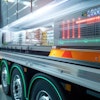

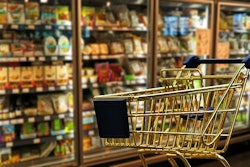
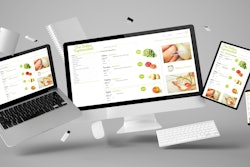
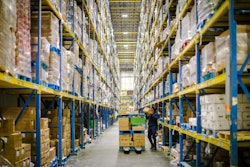
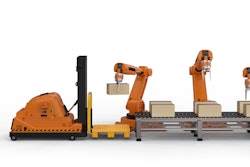








![Top Tech Startup Logo 2025 Vertical [color] (1)](https://img.foodlogistics.com/mindful/acbm/workspaces/default/uploads/2025/07/top-tech-startup-logo-2025-vertical-color-1.pZkBK95TLe.png?ar=16%3A9&auto=format%2Ccompress&bg=fff&fill-color=fff&fit=fill&h=135&q=70&w=240)
